 |
 |
 |
| |
Ageing and renal insufficiency in persons living with and without HIV in AFRICOS
|
| |
| |
Download the PDF here
IAS 2021 July 18-22
PRESENTER
David Chang
AUTHORS
D. Chang * (1), A. Esber (2), N. Dear (2), M. Iroezindu (3), E. Bahemana (4), H. Kibuuka (5), J. Owuoth (6), J. Maswai (7), T. Crowell (2), C. Polyak (2), J. Ake (1), C. Godfrey (8), AFRICOS Study Group
INSTITUTIONS
(1) Walter Reed Army Institute of Research, Silver Spring, United States, (2) Henry M. Jackson Foundation for the Advancement of Military Medicine, Bethesda, United States, (3) HJF Medical Research International, Abuja, Nigeria, (4) HJF Medical Research International, Mbeya, Tanzania, United Republic of, (5) Makerere University Walter Reed Project, Kampala, Uganda, (6) HJF Medical Research International, Kisumu, Kenya, (7) HJF Medical Research International, Kericho, Kenya, (8) Department of State, Office of the Global AIDS Coordinator, Washington, United States
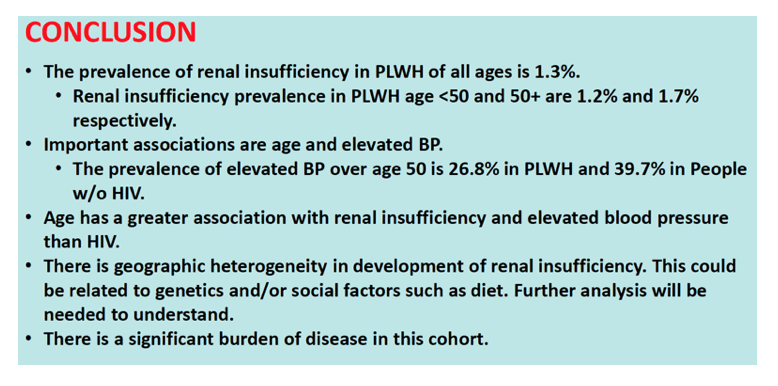
BACKGROUND: People living with HIV (PLWH) are at risk for renal insufficiency. This is not well characterized in ageing African cohorts. We examine the prevalence of renal insufficiency in PLWH and factors associated in its development.
METHODS: The African Cohort Study is a prospective cohort enrolling adults with and without HIV at 12 sites in Kenya, Tanzania, Uganda and Nigeria. Data were collected from January 2013 to December 2020 evaluating for the prevalence at enrollment and subsequent development of renal insufficiency and elevated blood pressure (BP). Renal insufficiency was defined as having one value of estimated glomerular filtration rate <60 mL/minute/1.73m2. Elevated BP was defined as having any systolic blood pressure of >139 mmHg or diastolic BP of >89 mmHg. Multivariable logistic regression with generalized estimating equations was used to estimate odds ratios and 95% confidence intervals (CI) for factors associated with renal insufficiency.
RESULTS: Of 3557 participants enrolled, 2953 (83.0%) were PLWH. Of PLWH, 2472 (83.7%) were age <50 and 481 (16.3%) were >50. At enrollment, renal insufficiency prevalence was similar among PLWH age <50 (n=30, 1.2%) and >50 (n=8, 1.7%). Elevated BP prevalence at enrollment was greater among PLWH age >50 (n=128, 26.8%) than <50 (n=246, 10.0%). After adjustment for gender, study site, and elevated BP, the odds of renal insufficiency at all visits compared to people without HIV age <50 were: 3.50 (95% CI: 1.44-8.50) in PLWH age <50, 3.28 (95% CI: 0.94-11.52) in people without HIV age >50, and 5.87 (95% CI: 2.39-14.40) in PLWH age >50. Abuja & Lagos, Nigeria had the greatest adjusted odds of renal insufficiency at all visits compared to Kayunga, Uganda, 5.23 (95% CI: 2.53-9.52).
CONCLUSIONS: Age and HIV are associated with development of kidney disease with the greatest odds in PLWH age >50. There is geographic heterogenicity in development of renal insufficiency requiring further investigation. These factors should be considered when determining screening practices for renal insufficiency, particularly if tenofovir disoproxil fumarate is prescribed.
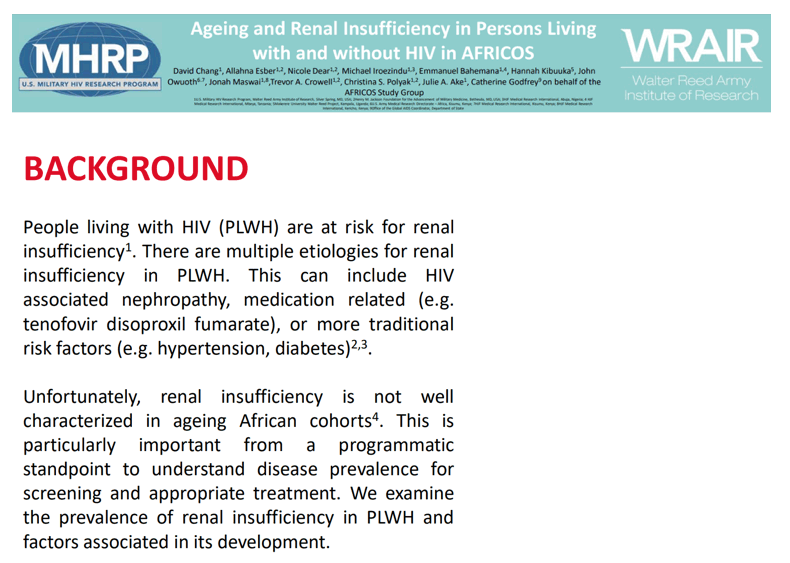
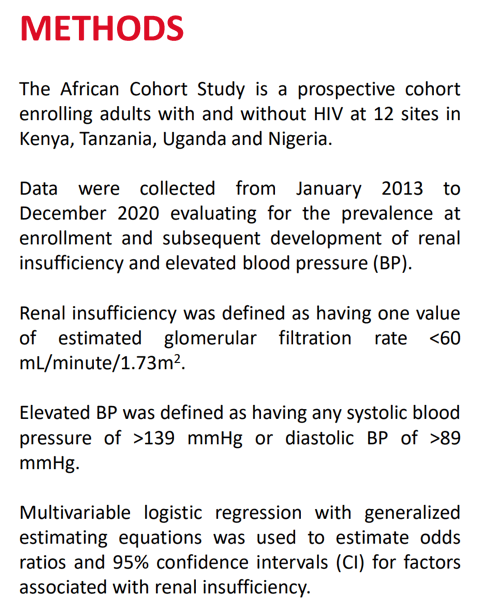
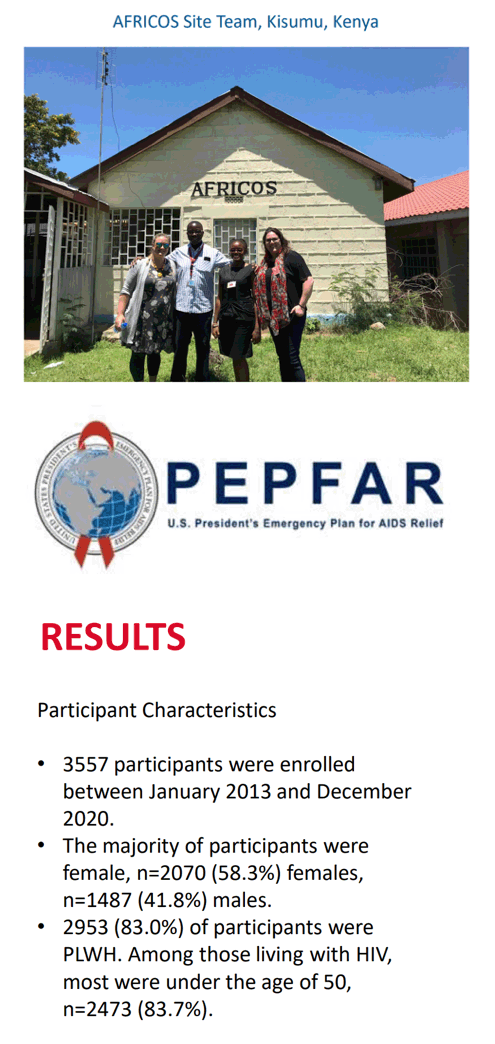
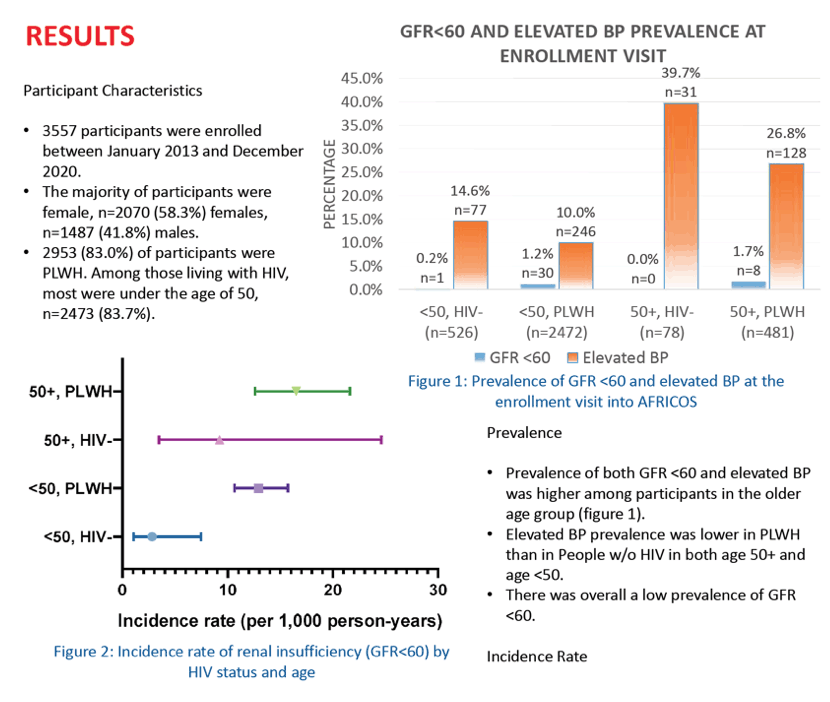
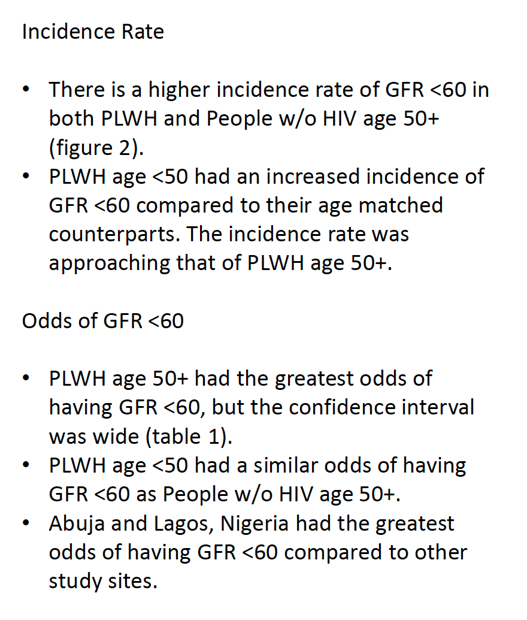
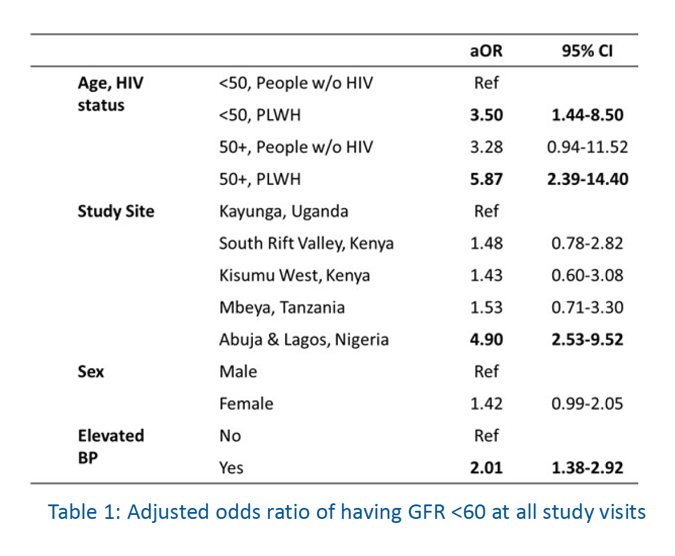
|
| |
|
 |
 |
|
|